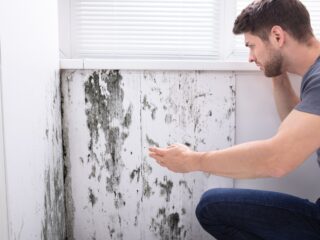
Losing a loved one is never easy, and the aftermath can be incredibly challenging. When a passing occurs at home or in a personal space, handling the cleanup adds another layer of difficulty. Knowing where to start, what’s safe, and how to protect yourself from potential health risks can make a crucial difference in ensuring everyone stays safe during this sensitive time.
This post will serve as your guide to help you understand the essentials of after-death cleanup with a focus on health and safety. Read on to learn more.
1 Know When To Hire Professional Help
In some instances, attempting to handle an after death cleanup on your own may not be safe. Luckily, if you’re in the United States, biohazard cleanup professionals are trained to deal with sensitive situations like this and have the necessary tools and equipment.
Hiring professionals experienced with Texas after death sanitation in Houston ensures a complete and thorough cleanup. Professionals also handle all biohazard waste disposal according to strict regulations present in different localities and states.
2 Wear Personal Protective Equipment (PPE)
You’ll need more than just gloves and a face mask when doing after death cleanup. You’re going to need PPE. Proper PPE includes gloves, masks (preferably N95 or higher), goggles, and full-body protective clothing.
Contaminants and pathogens, such as bloodborne viruses or bacteria, may be present. Using appropriate PPE protects your skin, eyes, and respiratory system from exposure. Invest in high-quality materials—regular household cleaning equipment won’t offer enough protection.
3 Ventilate The Area Properly
Airflow is vital when dealing with biohazard cleanup in relation to the passing of a loved one. Open windows and doors to allow fresh air to circulate and reduce strong odors. If possible, use fans to increase airflow, but make sure they’re pointed outward, not blowing air into other rooms. Ventilation not only reduces unpleasant smells but lowers the concentration of potentially harmful airborne particles as well.

4 Use Industrial-Grade Cleaning Supplies
Standard household cleaners just won’t cut it here. You’ll need industrial-grade disinfectants and deodorizers, specifically those designed to eliminate biohazards.
Certified products and those containing bleach or hydrogen peroxide work well to disinfect surfaces. Carefully read the instructions and warnings on each product. Never mix chemicals like bleach and ammonia, as they create hazardous fumes. Remember, disinfecting goes beyond making surfaces look clean—it’s about ensuring pathogens are eliminated.
5 Safely Handle And Dispose Of Biohazardous Materials
Materials contaminated with bodily fluids, including clothing, bedding, or personal items, are considered biohazardous. These items must be carefully removed, sealed in biohazard bags, and disposed of according to local regulations. It’s not enough to toss them into regular garbage; improper disposal could pose serious health risks to sanitation workers and anyone handling waste. Some states have strict guidelines on biohazard disposal, so it’s essential to follow local laws to avoid potential legal issues.
6 Disinfect All Hard Surfaces Thoroughly
Hard surfaces, like floors, countertops, and furniture, must be disinfected multiple times to ensure no pathogens remain. Start by cleaning any visible residue with a suitable detergent, then go over the area with a disinfectant. Pay extra attention to porous materials, as they tend to retain fluids and contaminants more easily. You might need to consider removing or replacing any deeply saturated materials for the sake of safety.
7 Be Mindful Of Potentially Contaminated Objects
Personal items, including electronics, books, and even decorative items, could be contaminated. It’s natural to want to keep these items for sentimental reasons, but evaluate them carefully. Some items might be impossible to disinfect thoroughly, especially if they have porous surfaces. When in doubt, it’s often safer to dispose of them, especially if they show visible contamination. Sentimental value is understandable, but prioritizing health and safety is essential in these situations.

8 Take Time To Protect Your Mental Health
The process of cleaning after a death can be physically and emotionally draining. It’s not unusual to feel overwhelmed, and your mental well-being is just as important as your physical health. Take breaks when you need them, and don’t hesitate to ask for support from friends, family, or even mental health professionals. Some people find it helpful to talk with grief counselors who can offer advice on coping with the emotional side of after-death cleanup.
Final Thoughts
Handling an after-death cleanup is a challenging and often emotional process, but prioritizing health and safety can help make it manageable. With the right PPE, proper cleaning techniques, and awareness of potential hazards, you can protect yourself and others from harm. Remember, there’s no shame in seeking professional help if the task feels overwhelming—your well-being and peace of mind are worth it.





